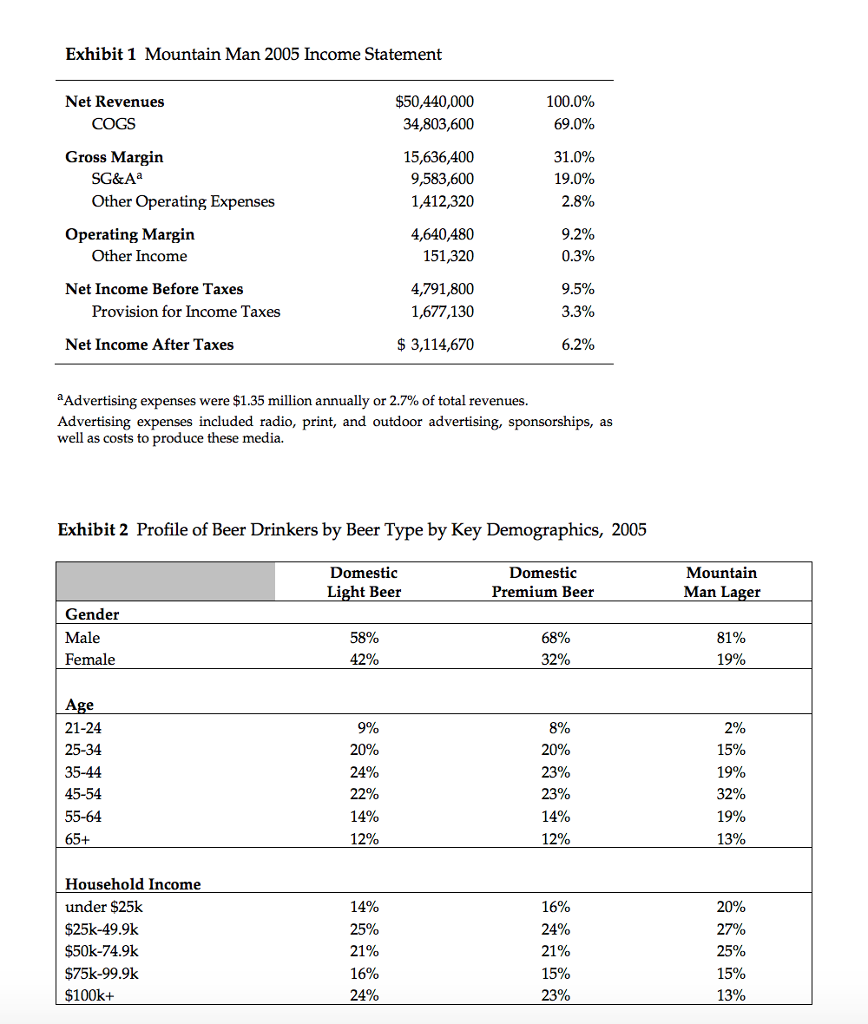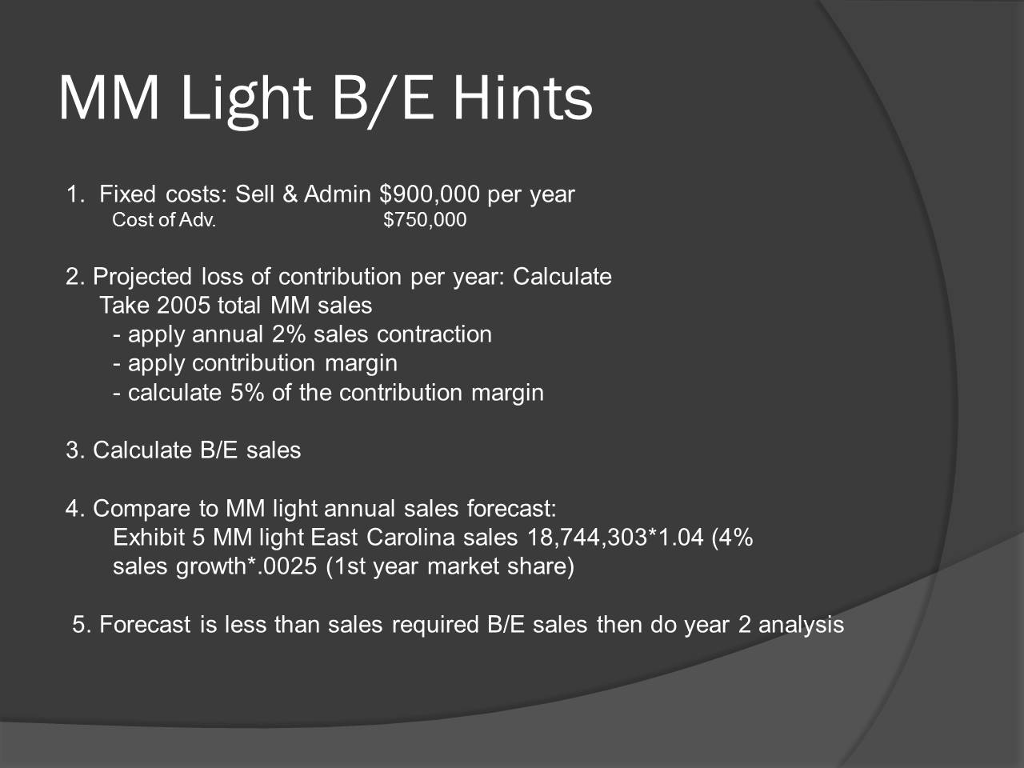Question
Undertake a break-even analysis to determine when the company is likely to break-even on introducing Mountain Man Light. In doing your analysis account for the
Undertake a break-even analysis to determine when the company is likely to break-even on introducing Mountain Man Light. In doing your analysis account for the possible effect of MM Light cannibalizing the sales of MM. The company is introducing a lower margin product that will take sales from a higher margin product therefore it will cannibalize MM contribution margin.
Hints: Break-even unit sales = [fixed costs+ loss of contribution from sales cannibalization]/[contribution per barrel]. Contribution per barrel = price per barrel - variable cost)
Fixed cost: Advertising of $750,000 spent each year (page 6)
Incremental SG&A $900,000 (page 6)
Calculate the cannibalization cost. Light beer will cost $4.69 (page 6) more per barrel to produce. Assume a 5% cannibalization rate. Calculate the total cannibalization cost for year 1 using the 2005 sales of $50,440,000 (Exhibit 1) and applying the contribution margin (Exhibit 1). Adjust for the -2% contraction in the market. Remember to tell us when you expect the company to break even on the introduction.
Page 6:
Chris also wondered if MMBC could afford to launch Mountain Man Light. Although the launch of Mountain Man Light would not require capital expenditures in plant and equipment in the short term due to existing excess capacity in Mountain Mans facility, launching a new product was an expensive endeavor for a lean company not used to making these kinds of investments. While this was not the launch of a new national beer brand, which Chris knew cost between $10 million and $20 million in TV advertising alone, it wasnt cheap to launch a new product on a regional basis either. The advertising agency estimated that creating a brand awareness level of 60% for Mountain Man Light in the East Central region would cost at least $750,000 in an intensive six-month advertising campaign. This would be on top of the $900,000 in annual, incremental SG&A costs that Chris projected the new product would require, based on the need for a Mountain Man Light product manager, an addition to the sales staff, and ongoing marketing expenditures. Although MMBCs variable cost per barrel of its lager beer was $66.93, it would cost $4.69 more per barrel to produce Mountain Man Light. Because Mountain Man would receive the same price per barrel for both products, the contribution margin for Mountain Man Light would be lower than the contribution margin of Mountain Man Lager. Chris knew that, given Mountain Mans CFOs conservative stance regarding investment, he would have to convince the senior management team that the Mountain Man Light product would generate a profit within two years, selling enough barrels to cover both the associated launch marketing and incremental SG&A expenses and make up for the negative impact on overall profitability resulting from potential lost Mountain Man Lager sales. His estimates regarding barrel sales would need to make sense in terms of market share in the very competitive light beer segment. Chris recalled the risks expressed by John Fader, the vice president of sales:

The teacher also gave this confusing slide:

Step by Step Solution
There are 3 Steps involved in it
Step: 1

Get Instant Access to Expert-Tailored Solutions
See step-by-step solutions with expert insights and AI powered tools for academic success
Step: 2

Step: 3

Ace Your Homework with AI
Get the answers you need in no time with our AI-driven, step-by-step assistance
Get Started


